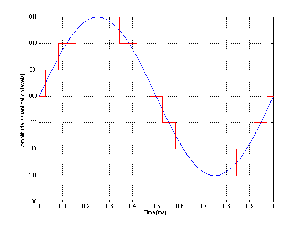Now, If only there was an way to encode the sound perhaps the way to store sound logically rather than analogously maybe if the signal weren't the sound itself, but instead were a set of instructions on how to recreate it. We could get lossless near-perfect sound reproduction and thus digital sound was born the heart of uncompressed digital sound is pulse code modulation or PCM.

PCM's roots can be traced back to the telegraph days, but it's invention as we know it today for sound came from British engineer Alec Reeves . He first devised the digital method of transmitting and receiving project “The Green Hornet” one was much more complicated than simple pulse code modulation, but PCM was a large part of its encryption.
So how does PCM work? It's actually simpler than it might seem at first. It's rather like a system for repeatedly asking what the instantaneous amplitude of a signal is many thousands of times per second. Then simply writing that down.
Let us imagine a simple sine wave, If This were to be encoded On a vinyl record the groove of the record would start out straight in the center then move to the left as the signal intensity reached Peak, then it would start to move to the right keep moving keep moving and then it would pull back to the center when it's played back the movement of the stylus as the walls of the groove wiggle it back and forth will recreate this signal and audiotape does the same thing except the intensity isn't recorded as a physical movement, but as a degree of magnetization on the tape, but with PCM, we aren't even trying to recreate the wave instead we are trying to quantify it and play Connect the Dots.
Let's just say I want to take 20 samples of that waveform. I'll divide it up into 20 chunks now. I just need to define the detail. I can have within each sample. Let's put this on a scale of 0 to 15. That's four bits of resolution. Now at each sampling point we can take the closest Value, this sine wave can now be represented as the string of numbers.








0 comments:
Post a Comment